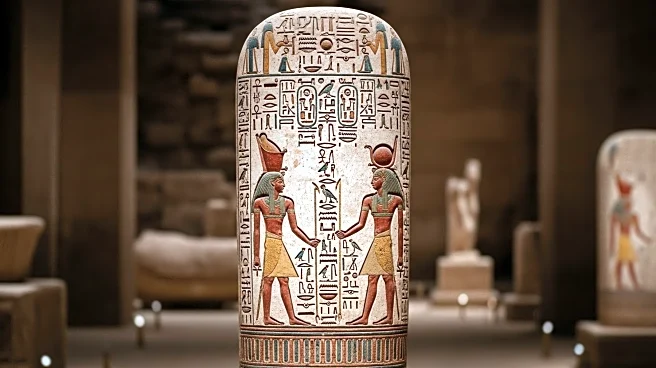What is the story about?
What's Happening?
A sandstone stele bearing the full text of the Canopus Decree has been discovered in the Sharqia region of Egypt, marking the first complete version found in over 150 years. The decree, issued in 238 BCE, outlines measures taken by King Ptolemy III and his family to honor temples, maintain order, and reform the Egyptian calendar. The stele, found at Tell Far'oun, features 30 lines of hieroglyphs and may provide new insights into ancient Egyptian governance and religious practices.
Why It's Important?
The discovery of the complete Canopus Decree offers a rare glimpse into the political and religious landscape of ancient Egypt during the reign of Ptolemy III. It could lead to a reevaluation of historical interpretations of the period, providing a more comprehensive understanding of the decrees and their impact on Egyptian society. The stele may also contribute to the study of hieroglyphic writing and the evolution of ancient Egyptian language and culture.
Beyond the Headlines
The stele's discovery highlights the ongoing importance of archaeological research in uncovering historical records that can reshape understanding of ancient civilizations. It underscores the role of decrees in ancient governance and the interplay between political power and religious authority. The find may stimulate further exploration of similar sites in Egypt, potentially leading to additional discoveries that could enrich the historical narrative of the region.
AI Generated Content
Do you find this article useful?

















